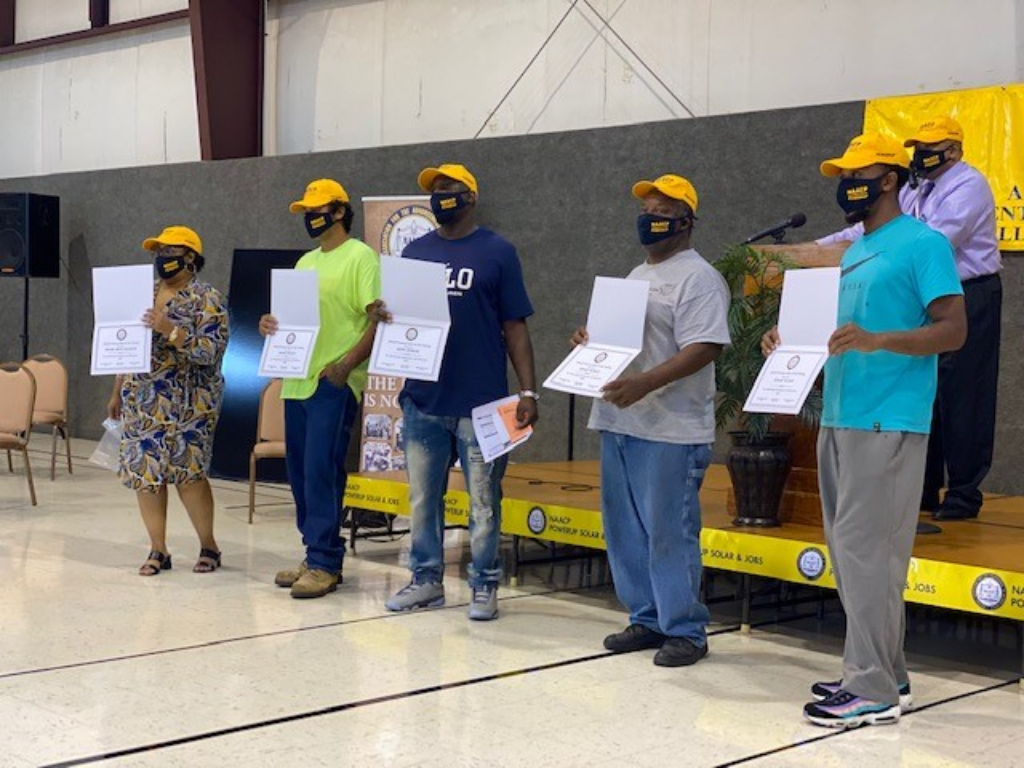Project Summary
In 2020, the Indiana National Association for the Advancement of Colored People (NAACP) launched a Just Energy Campaign and funded the installation of solar panels on the Greater St. James Community Recreation and Education Center in Evansville, Indiana. In alignment with this Campaign, the Indiana NAACP established the PowerUp initiative to advance solar production in vulnerable communities and create clean energy jobs for communities of color and low-income areas. They collaborated with the Midwest Renewable Energy Association (MREA) to develop the online solar training course, and with Morton Solar to assist with the in-person training. Trainees successfully completed the initiative in its first year and were offered opportunities to work with the International Brotherhood of Electrical Workers (IBEW) or join a more formalized solar training program and become certified.



